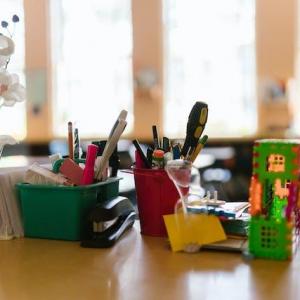
Photo by Keira Burton: https://www.pexels.com/photo/happy-mother-supporting-black-baby-making-first-step-6624244/
Discipline is an integral part of parenting, but it is important to approach it in a way that fosters a positive and healthy parent-child relationship. Effective discipline involves setting clear boundaries, teaching important values, and guiding children towards responsible behavior. In this article, we will explore different methods of effective discipline and positive parenting techniques that can promote the well-being and development of children.
Ensure that rules and expectations are age-appropriate and realistic. Avoid setting rules that are too strict or too lenient, as this can lead to confusion and frustration. Be clear about the consequences that will occur if the rules are not followed, and consistently enforce those consequences.
For example, if one of the rules is to complete homework before playtime, consistently reinforce this expectation by allowing playtime only after homework is completed. By being consistent, you teach your child the importance of following rules and help them understand the consequences of their actions.
When praising your child, be specific and genuine in your appreciation. Instead of saying, "Good job," try saying, "I am proud of you for completing your chores without being asked. It shows responsibility and independence." This type of specific praise helps reinforce positive behaviors and encourages your child to continue exhibiting them.
Rewards can be in the form of extra privileges, special activities, or small treats. However, it is important to ensure that rewards are used in moderation and not as a bribe. The goal is to encourage positive behavior and intrinsic motivation rather than creating a dependency on external rewards.
Natural consequences teach children about cause and effect. For example, if a child refuses to eat their dinner, a natural consequence may be feeling hungry later in the evening. Experiencing the natural consequence of feeling hungry can help them understand the importance of eating a balanced meal.
On the other hand, a logical consequence may involve temporarily removing a privilege, such as screen time, until the child shows responsibility in completing their meal. Both types of consequences provide valuable learning opportunities without resorting to punitive measures.
During a time-out, the child should be in a safe and quiet space where they can think about their behavior and emotions. After the time-out, engage in a discussion with your child to understand their perspective and help them develop strategies for handling similar situations in the future.
It is important to remember that time-outs are not meant to be a harsh punishment but rather a way for the child to regain control of their emotions and learn from their actions. Use this technique sparingly and ensure that it is used in a constructive and supportive manner.
Effective discipline is an essential aspect of positive parenting. By implementing these techniques - communication and connection, setting clear expectations and consistency, positive reinforcement and rewards, natural and logical consequences, and time-outs and cooling-off periods - parents can guide their children towards responsible behavior while maintaining a strong and healthy parent-child relationship.
Remember that discipline should be approached with love, empathy, and understanding. It is important to recognize that children are still learning and developing, and discipline should focus on teaching and guiding rather than shaming or controlling. By adopting these positive parenting techniques, you can create an environment that promotes your child's emotional well-being, self-esteem, and overall growth.
In addition to the techniques discussed, it is also crucial to model appropriate behavior as a parent. Children learn by observing their parents, so it is important to lead by example. Show your child how to handle emotions and conflicts in a respectful and calm manner. When you make a mistake, take the opportunity to apologize and demonstrate accountability. This teaches your child the importance of taking responsibility for their actions and making amends when necessary.
Furthermore, effective discipline involves fostering a sense of autonomy and independence in your child. Encourage their decision-making skills by offering choices within reasonable limits. For example, instead of telling your child what to wear, give them a few options to choose from. This allows them to develop a sense of responsibility and ownership over their choices.
It is also important to remember that discipline is not a one-size-fits-all approach. Each child is unique and may respond differently to various techniques. As a parent, you need to be flexible and adaptable in your disciplinary methods. Pay attention to your child's individual needs, temperament, and developmental stage. What works for one child may not work for another, so it is essential to tailor your approach accordingly.
Lastly, effective discipline involves ongoing communication and collaboration with your child. As they grow older, involve them in discussions about rules, expectations, and consequences. Seek their input and allow them to express their thoughts and opinions. This not only empowers them but also helps them understand the reasoning behind your disciplinary methods.
In conclusion, effective discipline and positive parenting techniques are crucial for the healthy development and well-being of children. By focusing on communication and connection, setting clear expectations and being consistent, utilizing positive reinforcement, implementing natural and logical consequences, and using time-outs and cooling-off periods constructively, parents can guide their children towards responsible behavior while maintaining a strong and healthy parent-child relationship.
Communication and Connection:
Effective discipline starts with open and honest communication. Establishing a strong connection with your child creates a foundation of trust and respect, making disciplinary conversations more effective. Take the time to listen to your child's thoughts and feelings, and encourage them to express themselves openly. When addressing behavioral issues, approach the conversation calmly and respectfully. Explain why certain behaviors are not acceptable and discuss alternative actions or solutions. By involving your child in problem-solving and decision-making, you empower them to take responsibility for their actions and learn from their mistakes. Encourage open communication by creating a safe and non-judgmental space for your child to express their thoughts and emotions. This helps build a strong bond and allows you to better understand their perspective, enabling you to address behavioral issues effectively.Setting Clear Expectations and Consistency:
Consistency is key when it comes to discipline. Clearly communicate your expectations and set consistent limits and boundaries for your child. Consistency provides a sense of stability and helps children understand what behaviors are acceptable and what consequences may follow.Ensure that rules and expectations are age-appropriate and realistic. Avoid setting rules that are too strict or too lenient, as this can lead to confusion and frustration. Be clear about the consequences that will occur if the rules are not followed, and consistently enforce those consequences.
For example, if one of the rules is to complete homework before playtime, consistently reinforce this expectation by allowing playtime only after homework is completed. By being consistent, you teach your child the importance of following rules and help them understand the consequences of their actions.
Positive Reinforcement and Rewards:
Positive reinforcement is a powerful tool in effective discipline. Instead of solely focusing on negative behaviors, make an effort to acknowledge and praise positive behaviors. This can be done through verbal praise, a simple "thank you," or a small reward system.When praising your child, be specific and genuine in your appreciation. Instead of saying, "Good job," try saying, "I am proud of you for completing your chores without being asked. It shows responsibility and independence." This type of specific praise helps reinforce positive behaviors and encourages your child to continue exhibiting them.
Rewards can be in the form of extra privileges, special activities, or small treats. However, it is important to ensure that rewards are used in moderation and not as a bribe. The goal is to encourage positive behavior and intrinsic motivation rather than creating a dependency on external rewards.
Natural and Logical Consequences:
When a child misbehaves, it is important to provide consequences that are related to their actions. Natural consequences occur naturally as a result of a behavior, while logical consequences are imposed by the parent based on the behavior.Natural consequences teach children about cause and effect. For example, if a child refuses to eat their dinner, a natural consequence may be feeling hungry later in the evening. Experiencing the natural consequence of feeling hungry can help them understand the importance of eating a balanced meal.
On the other hand, a logical consequence may involve temporarily removing a privilege, such as screen time, until the child shows responsibility in completing their meal. Both types of consequences provide valuable learning opportunities without resorting to punitive measures.
Time-Outs and Cooling-Off Periods:
Time-outs can be an effective discipline technique when used appropriately. They provide a chance for both the child and the parent to calm down and reflect on the situation. Time-outs should be brief, age-appropriate, and used as a tool for self-regulation rather than punishment.During a time-out, the child should be in a safe and quiet space where they can think about their behavior and emotions. After the time-out, engage in a discussion with your child to understand their perspective and help them develop strategies for handling similar situations in the future.
It is important to remember that time-outs are not meant to be a harsh punishment but rather a way for the child to regain control of their emotions and learn from their actions. Use this technique sparingly and ensure that it is used in a constructive and supportive manner.
Effective discipline is an essential aspect of positive parenting. By implementing these techniques - communication and connection, setting clear expectations and consistency, positive reinforcement and rewards, natural and logical consequences, and time-outs and cooling-off periods - parents can guide their children towards responsible behavior while maintaining a strong and healthy parent-child relationship.
Remember that discipline should be approached with love, empathy, and understanding. It is important to recognize that children are still learning and developing, and discipline should focus on teaching and guiding rather than shaming or controlling. By adopting these positive parenting techniques, you can create an environment that promotes your child's emotional well-being, self-esteem, and overall growth.
In addition to the techniques discussed, it is also crucial to model appropriate behavior as a parent. Children learn by observing their parents, so it is important to lead by example. Show your child how to handle emotions and conflicts in a respectful and calm manner. When you make a mistake, take the opportunity to apologize and demonstrate accountability. This teaches your child the importance of taking responsibility for their actions and making amends when necessary.
Furthermore, effective discipline involves fostering a sense of autonomy and independence in your child. Encourage their decision-making skills by offering choices within reasonable limits. For example, instead of telling your child what to wear, give them a few options to choose from. This allows them to develop a sense of responsibility and ownership over their choices.
It is also important to remember that discipline is not a one-size-fits-all approach. Each child is unique and may respond differently to various techniques. As a parent, you need to be flexible and adaptable in your disciplinary methods. Pay attention to your child's individual needs, temperament, and developmental stage. What works for one child may not work for another, so it is essential to tailor your approach accordingly.
Lastly, effective discipline involves ongoing communication and collaboration with your child. As they grow older, involve them in discussions about rules, expectations, and consequences. Seek their input and allow them to express their thoughts and opinions. This not only empowers them but also helps them understand the reasoning behind your disciplinary methods.
In conclusion, effective discipline and positive parenting techniques are crucial for the healthy development and well-being of children. By focusing on communication and connection, setting clear expectations and being consistent, utilizing positive reinforcement, implementing natural and logical consequences, and using time-outs and cooling-off periods constructively, parents can guide their children towards responsible behavior while maintaining a strong and healthy parent-child relationship.
Article
Be the first comment
Elite Article














